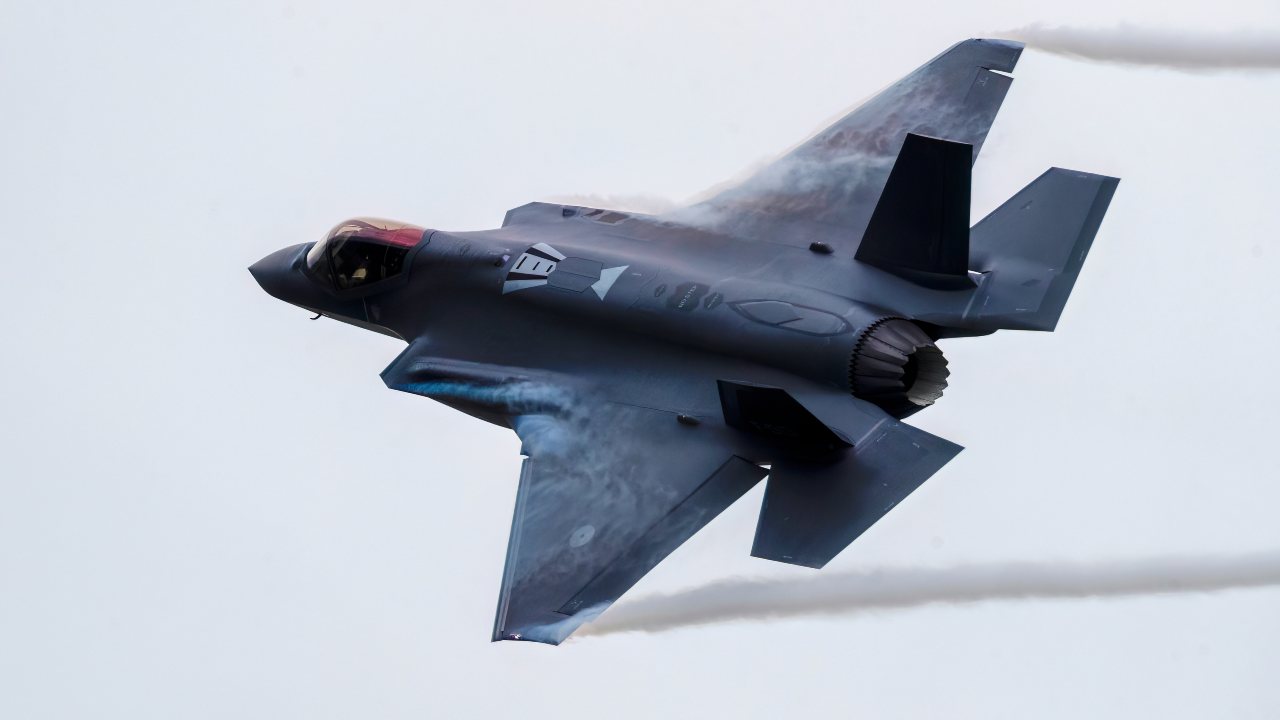Russia's MiG-35 Fighter 'Nightmare' Is A Sad Reality
Although equipped with advanced radar and capable of carrying a variety of armaments, the MiG-35 is outmatched by the American F-35 Lightning II, particularly in engine power and stealth capabilities.
Summary: Russia touted the MiG-35 Fulcrum-F as a "fifth-generation" fighter jet, but it has fallen short of expectations, with only six units produced out of an initially planned thirty-seven.
-First introduced in 2007, the MiG-35 struggled to compete with other modern fighters due to issues with radar and engines.
-Although equipped with advanced radar and capable of carrying a variety of armaments, the MiG-35 is outmatched by the American F-35 Lightning II, particularly in engine power and stealth capabilities.
-Given Russia's ongoing resource constraints, further production of the MiG-35 is unlikely.
Why Russia's MiG-35 is No F-35
Although the Kremlin may tout its Fulcrum-F fighter jet as a “fifth-generation” platform, this aircraft has certainly not lived up to the hype.
In fact, out of the original thirty-seven units Moscow planned to produce, only six ever came to fruition. The Russian Air Force first employed its MiG-35 jet in the 2022 China International Aviation and Aerospace Exhibition, where it was displayed alongside the country’s Su-35, Su-57, and Su-34 platforms.
While the Kremlin was hoping to convince potential foreign clients that the Fulcrum-F is on par with China’s Chengdu J-20 and America’s F-35 Lightning II fighters, the platform has yet to actually be exported.
The MiG-35’s origin story
Russia first unveiled a prototype for its MiG-29 jet back in 2007 at the Aero India air show, hoping to sell the new jet to New Delhi. However, issues with the platform’s radar and engines eventually pushed it out of the competition as better contenders like the Eurofighter Typhoon, Boeing F/A-18 Super Hornet, Saab JAS 39, and Dassault Rafale were available. The manufacturer Mikoyan continued to produce an export variant of the fighter at the Sokol aviation plant in Russia, which was showcased years later in 2019.
Perhaps the Fulcrum-F’s most significant trait is that it became the first Russian airframe to be equipped with active electronically scanned array radar upon introduction. The Zhuk-MA radar is reportedly capable of offering a larger air target detection radius according to Air Force Technology: “Like radar, OLS allows the MiG-35 to detect targets and aim weapon systems. But, unlike radar, OLS has no emissions, meaning it cannot be detected. OLS works like a human eye by getting the picture and later analyzing it. NII PP, the federal space agency science and research institute’s engineers have chosen more short-wave bands for the matrix, which has increased sensitivity of the complex several times and has increased detection range.” The incorporation of this upgraded Radar differentiates the MiG-35 from the MiG-29.
The MiG-35 vs F-35
The MiG-35 was built to carry a wide range of armaments. With its nine hardpoints, the jet can lug a combination of Kh-31P anti-radar missiles, Kh-31A anti-ship missiles, KAB-500Kr TV guided bombs, and the Kh-29TE missiles. Considering these capabilities, the Fulcrum-F could be an effective tool in air superiority missions when properly outfitted. Comparably, the F-35 Lightning II is fitted with half this missile payload.

However, the American fifth-generation platform employs a much more powerful engine than the MiG-35: the Pratt & Whitney F135. The MiG-25’s FADEC RD-33MK engines may be more advanced than the previous Kimov RD-33 turbofan engine, but it remains second-tier when compared to its American counterpart. Additionally, the Lightning II benefits from a decisive advantage in terms of its stealth capabilities.
Since only six MiG-35s are in circulation today, it is difficult to gauge the potential use of this platform by the Russian Air Force down the line. The ongoing Ukraine invasion continues to use up Moscow’s resources and funds so the country is unlikely to produce additional Fulcrum-Fs in the near future.
About the Author: Maya Carlin
Maya Carlin, National Security Writer with The National Interest, is an analyst with the Center for Security Policy and a former Anna Sobol Levy Fellow at IDC Herzliya in Israel. She has by-lines in many publications, including The National Interest, Jerusalem Post, and Times of Israel. You can follow her on Twitter: @MayaCarlin.
All images are from Shutterstock and Creative Commons.


